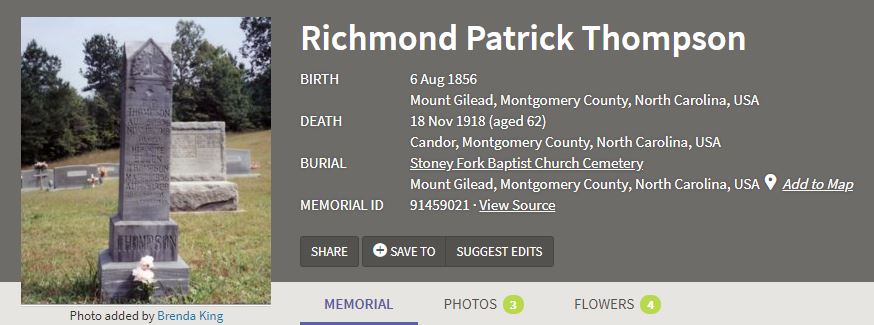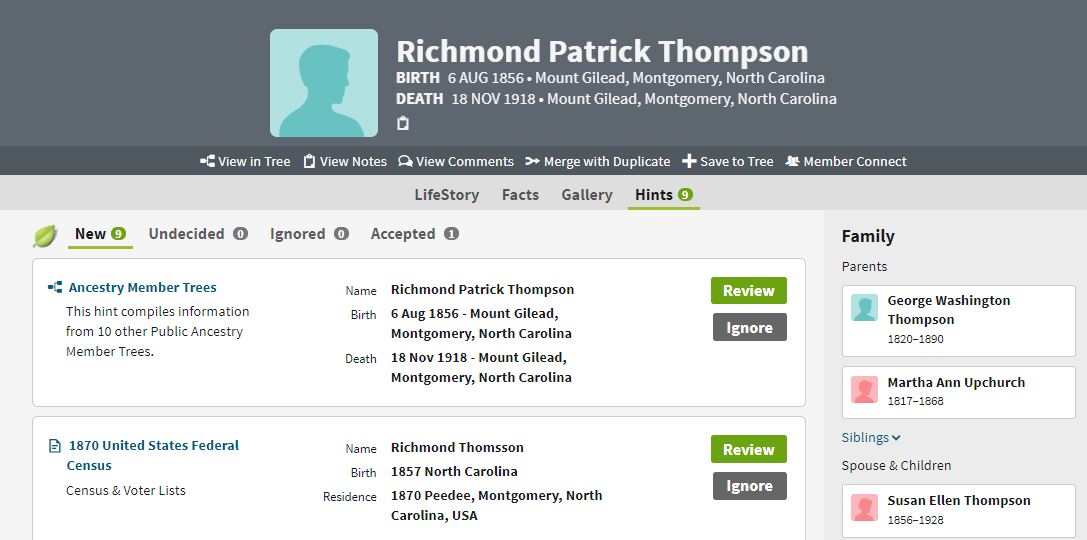Like many other people, I use Ancestry's little green "leaf" hints to direct me to records about the subjects I'm researching. Unlike many others, I evaluate those hints critically in order to make my own decisions on whether they're correct. I also look for records that should be in the list of hints, but aren't.
A case in point is Richmond Patrick Thompson, who was born in Montgomery County, North Carolina in 1856, and died there in November 1918, according to his memorial page on Find A Grave:
"North Carolina Death Indexes, 1908-2004," Ancestry > Wilson > 1914 > T > image 13 of 18, entry for Richmond Thompson (1918).
However, there are a couple of problems with this. Richmond Patrick Thompson died in Montgomery County in 1918, not Wilson County.in 1914. I looked at another 1918 death record on this same page (for Roland F. Thompson, who died in November 1918), it was from Duplin County. So this index page is for several counties, and several years, not just Wilson County in 1914.
When I decided to browse this collection, I found something totally different:
I still want to see a death certificate, because it is the original record. Indexes like these, even if they are hand-written, are derivative records created from original records.
My next step is to browse Ancestry's collection of North Carolina death certificates, zeroing in on Montgomery County in November 1918:
There are several reasons why I concluded this is Richmond Thompson's death certificate:
- He was a white male of the right age (60) and occupation (farmer).
- His father's name was George Washington Thompson, and although it's a stretch of the imagination, the name of father on this certificate could be "Washg Thompson".
- His mother's name was Martha Ann Upchurch; the name on this certificate looks like Patsy Upchurch. Patsy is a common nickname for Martha.
- There is no informant listed, but the information here seems to be mostly accurate.
- The place of burial is noted as Mt. Gilead, which is where Stoney Creek Baptist Church Cemetery is located.
Conclusion:
Be active, and not passive, in your search for your ancestors. Don't just look for the records that are there, but look for the records that aren't there, but should be. This goes for other types of records, too - census, military, immigration - not just vital records. Browsing an indexed collection could reveal the record you need!







 RSS Feed
RSS Feed